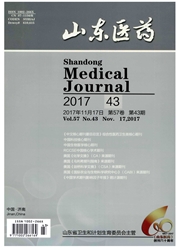

 中文摘要:
中文摘要:
目的探讨格拉斯哥昏迷评分(GCS)、创伤严重度评分(ISS)和改良创伤评分(RTS)对颅脑损伤合并多发伤患者预后评估的价值。方法将颅脑损伤合并多发伤547例患者(死亡67例,存活480例)的临床资料录入创伤数据库系统V3.0软件,自动编码计算GCS、ISS、RTS,分析GCS、ISS、RTS与病死率的相关性;采用受试者工作特征(ROC)曲线分析GCS、ISS、RTS对不良预后判断的敏感度及特异度。结果死亡患者的ISS高于存活患者,GCS、RTS低于存活患者(P均<0.05)。RTS、GCS、ISS与病死率均有相关性(r分别为-0.90、-0.86、0.77,P均<0.05),其中RTS与病死率的相关性最强。RTS、GCS、ISS在ROC曲线下面积分别为0.922、0.918、0.861。以ISS≥25分、GCS≤8分、RTS≤10分为最佳截断点,RTS、GCS判断不良预后的敏感度均高于ISS(P均<0.05)。结论RTS可用于颅脑损伤合并多发伤患者预后的早期评估,其效果优于GCS、ISS。
 英文摘要:
英文摘要:
Objective To investigate the value of Glasgow coma scale (GCS), injury severity score (ISS) and the revised trauma score ( RTS) in prognosis evaluation of patients with craniocerebral injury combined with multiple trauma. Methods We entered the clinical data of 547 cases with craniocerebral injury combined with multiple trauma (67 cases of death and 480 cases of survival) into the database system V3.0 software, and it automatically coded and calculated GCS, ISS and RTS.The correlations of RTS, GCS and ISS with mortality rate were analyzed.Using the receiver-operating charac-teristic curve ( ROC) to analyze the sensitivity and specificity in judgment of poor prognosis.Results The ISS in death was higher, but GCS and RTS was lower than that of the survival (all P<0.05).RTS, GCS, ISS and mortality rate had significant correlations (r=-0.90,-0.86, and 0.77, respectively;all P<0.05), and the correlation between RTS and mortality rate was the strongest.The area under the ROC curve ( AUC) of RTS, GCS and ISS were 0.922, 0.918 and 0.861, respectively.We took ISS≥25, GCS≤8 and RTS≤10 as the cut-off point, the sensitivities of GCS and RTS in judgment of poor prognosis were both higher than that of ISS (all P<0.05).Conclusion RTS can be used for the early evaluation of prognosis of patients with craniocerebral injury combined with multiple trauma, and its effect is better than that of GCS and ISS.
 同期刊论文项目
同期刊论文项目
 同项目期刊论文
同项目期刊论文
 期刊信息
期刊信息
